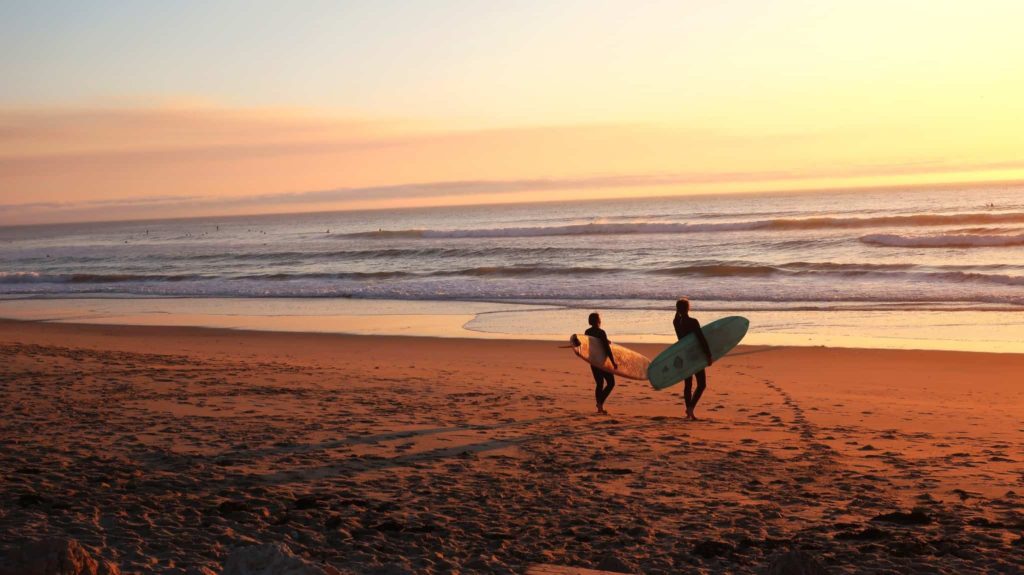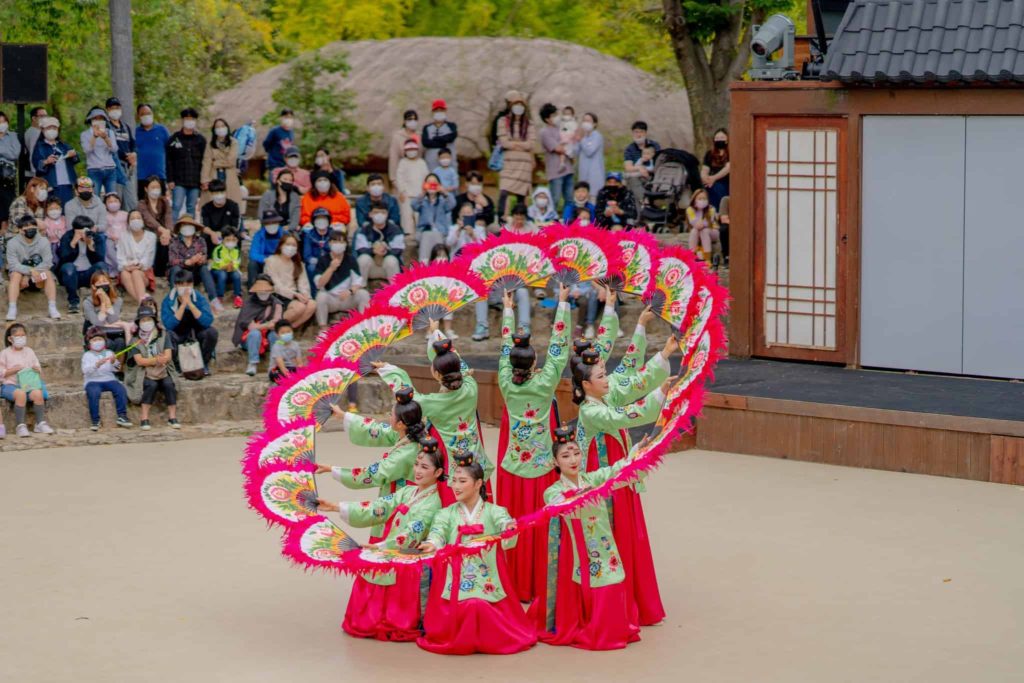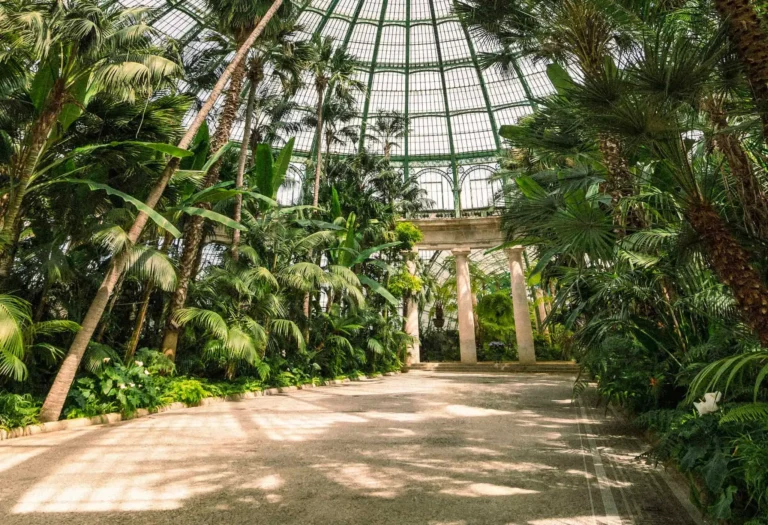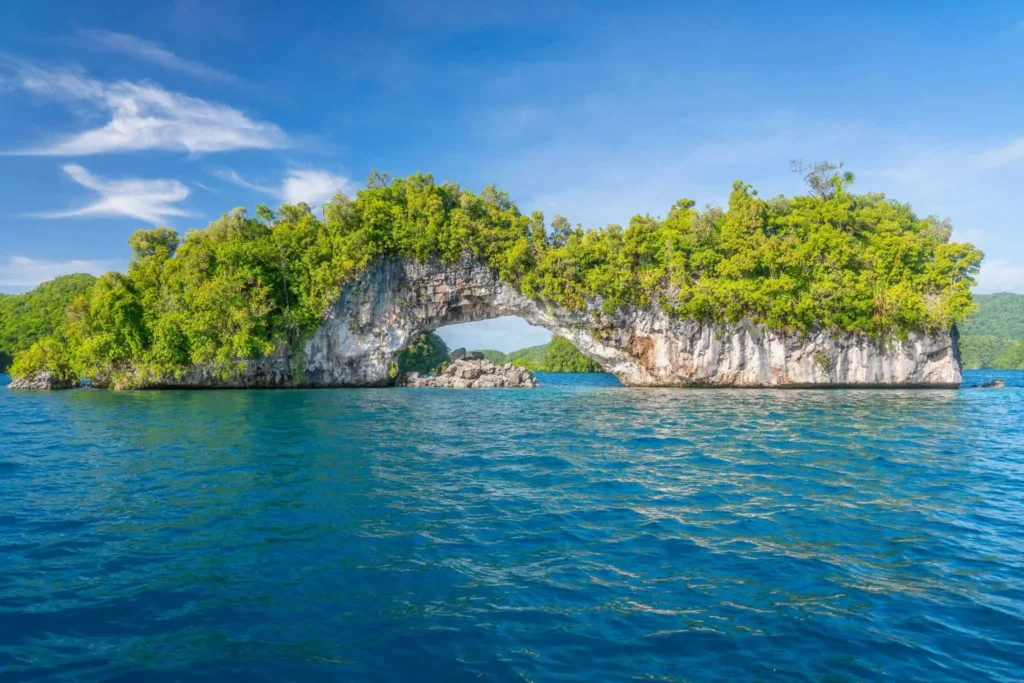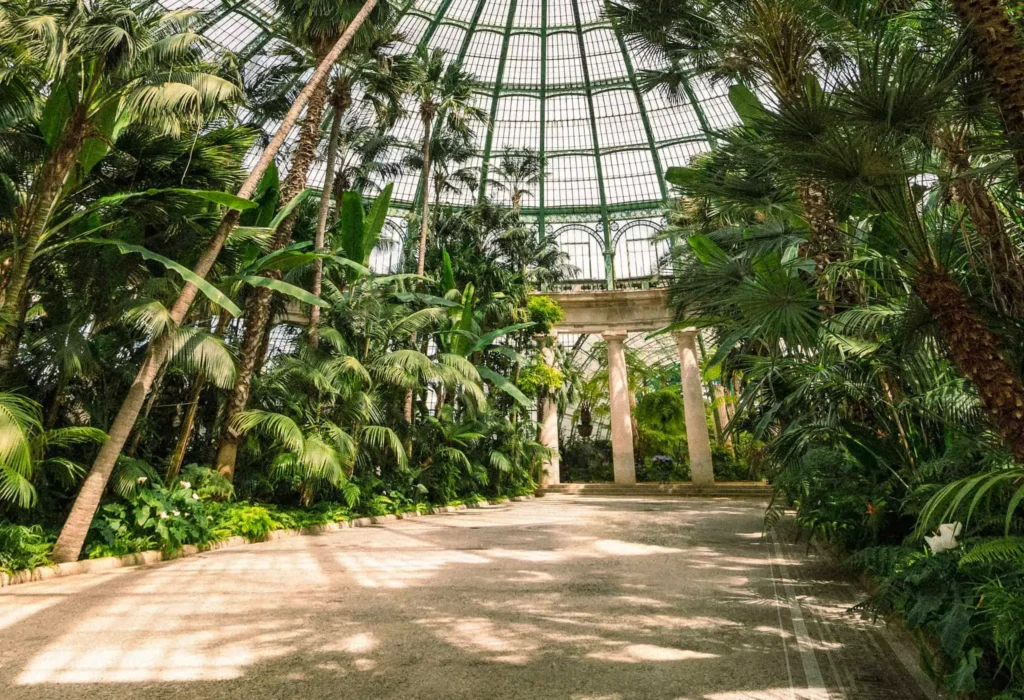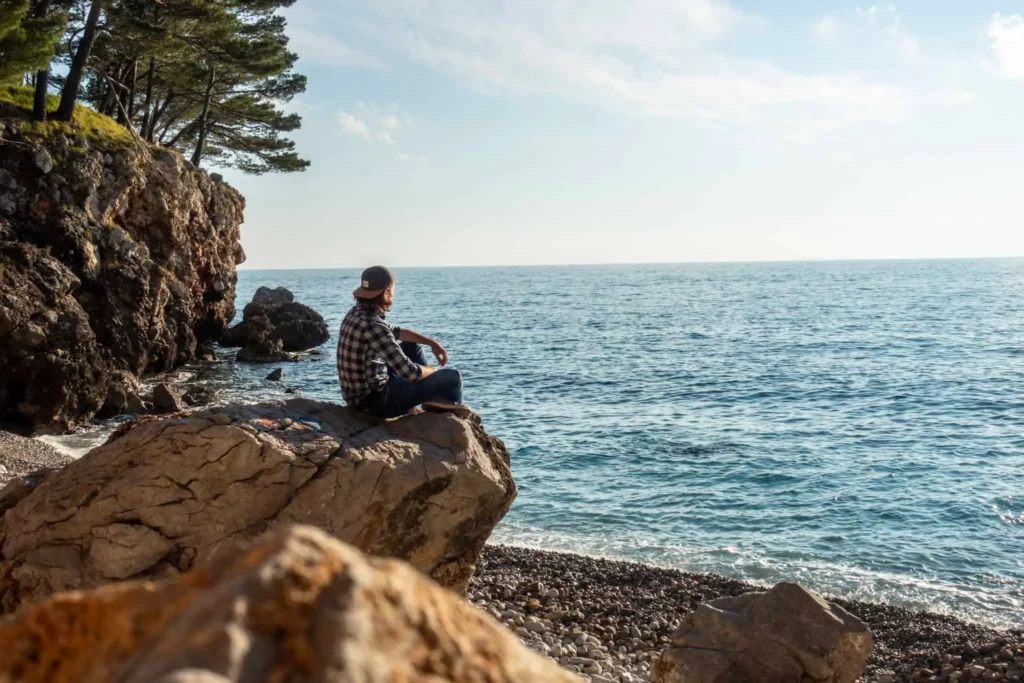| This post may contain affiliate links. Whenever you book or buy something through one of these, Giving Getaway gets a small commission, of which 100% will be donated to charity, without any extra cost to you! |
The popular phrase “time flies” is never truer than when you are traveling. With so many things to see and do, it can be hard to take a step back and enjoy the journey instead of just rushing from one destination to the next. Slow traveling allows us to savor each moment, creating an experience that is truly worth its weight in gold.
For those of you who don’t know what slow travel is all about, it’s quite simple: rather than trying to cram too much into your schedule or itinerary, slow traveling encourages taking time out along the way. Instead of hopping from city to city with only a few days in each place, why not spend two weeks in one location?
Imagine waking up early one morning and spending the day wandering through cobbled streets without any real plan in mind; stopping wherever takes your fancy – be it a cafe selling freshly brewed coffee or an outdoor market selling handmade gifts crafted by locals. That’s slow traveling at its best!
So let’s dig a bit deeper and explore the benefits of slow traveling as well as some tips on how to make your journey all the more meaningful!
Definition of Slow Traveling
Slow traveling is a leisurely journey that allows for deliberate and unhurried exploration. It’s the antithesis of rushed trips or ‘fly by night’ vacations that can leave us feeling exhausted, overwhelmed, and deprived of truly experiencing our destination.
Rather than checking off must-see attractions at breakneck speed, slow travelers savor their surroundings with an appreciation for local culture and customs. The goal isn’t necessarily to cover as much territory as possible; rather it’s about connecting deeply to unfamiliar places in meaningful ways.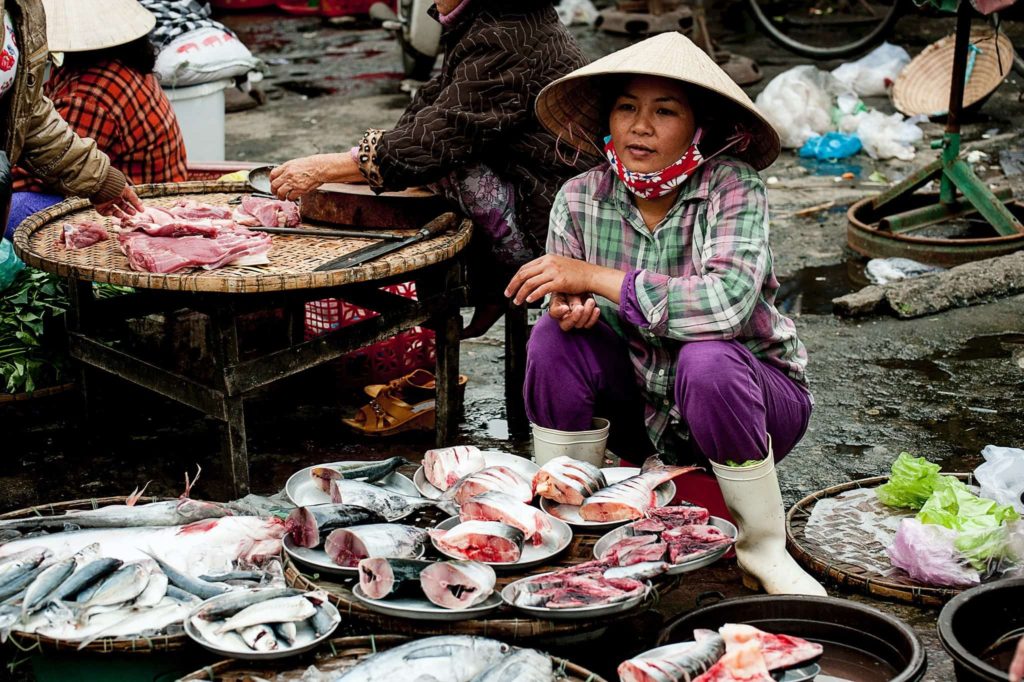
Slow travelers are often interested in taking part in unique activities such as visiting village markets, learning traditional crafts from locals, or simply sitting in cafes with people watching over coffee. These types of experiences enhance the understanding of foreign cultures while also providing insight into our own lives and values.
Even after returning home, those who practice slow travel remain connected to the places they have visited through lasting memories and newfound perspectives gained during their trip.
The Benefits of Slow Traveling
One might wonder why slow traveling should be the way to go when planning a trip. After all, traveling quickly can be more efficient and cost-effective. But there are numerous advantages associated with slow traveling, both for the traveler and the destination being visited.
One of the biggest advantages of slow traveling is the reduction of stress that often comes with fast-paced, hectic travel. Traveling slowly allows you to take the time to rest and recharge, while also enabling you to fully experience your surroundings. This can lead to a greater sense of relaxation and rejuvenation.
There’s something particularly special about having days (and sometimes weeks) rather than hours or minutes allotted for exploration – moments felt only while journeying at a slower speed. And as such leisurely trips often come without strict itineraries and deadlines, they allow us the freedom to wander off course and discover unexpected things along the path. All these contribute towards making our travels more memorable and enjoyable—something we won’t ever forget!
Moreover, slow traveling allows for a deeper connection to places visited by allowing us to immerse ourselves in local culture. By slowing down your pace of travel, you get a chance to observe customs and traditions up close, engage in conversations with locals about their everyday lives or take part in activities adapting the traditional practices of an area – all valuable chances for gaining insight into different cultures around the world.
In addition, slow travel can also have a positive impact on the local communities and environment. By staying longer in one place, you can support local businesses and economies, as well as reduce your carbon footprint by minimizing transportation emissions. This can ultimately help to promote sustainable tourism practices, which are essential for the long-term preservation of destinations and cultures around the world.
Let us now take a look at what exactly it is that you can do to slow down your pace on your next trip.
Tips For Slow Traveling
Slow traveling is a wonderful way to experience new destinations in a more mindful and meaningful way. By taking time to explore one place rather than bouncing from city to city, you can discover hidden gems and gain a deeper understanding of the culture, people, and environment.
However, slowing down and taking a more deliberate approach to travel can require some planning and preparation. So let’s explore some tips and guidelines to help you make the most out of your slow traveling experience.
1) Choose Destinations That Allow for Slow Travel
When choosing a destination for slow travel, it is important to consider a few criteria to ensure the ultimate slow travel experience. First, look for destinations that are safe and welcoming to visitors, but not overly touristic. In some heavily touristic places, the locals may be tired of visitors and not as welcoming. On the other hand, finding a place where locals are friendly and welcoming can enhance the slow travel experience.
It’s also important to look for places with less density and fewer crowds, as crowded places are not ideal for slow travel. Consider choosing villages over cities for a more relaxed pace of life.
Another important factor to consider is the mindset of the locals in your destination. Countries with warm climates and proximity to the ocean tend to have people with a more relaxed attitude toward life, making them great choices for slow traveling. On the other hand, countries with very strict social standards may not be the best fit for slow travel.
Some of the best destinations for slow traveling include:
- Portugal, known for its laid-back lifestyle, beautiful beaches, and charming villages
- Thailand, with its friendly locals, delicious food, and breathtaking natural scenery
- Costa Rica, a destination known for its eco-tourism, stunning wildlife, and commitment to sustainability
- Greece, with its picturesque islands, rich history, and beautiful beaches
- New Zealand, a destination famous for its stunning nature, outdoor adventures, and welcoming locals
- Australia, known for its diverse landscapes, stunning beaches, and laid-back culture
2) Plan and Be Flexible
When it comes to slow traveling, no two trips are the same. Planning ahead is essential for a successful and meaningful journey. However, being flexible with your itinerary can lead to unexpected discoveries. Whether you’re visiting a new city or an unfamiliar country, dedicating time to planning will help ensure that you get the most out of your experience.
For starters, take some time to research the local community and culture – this will give you greater insight into their customs and way of life. This knowledge may also provide valuable opportunities for deeper engagement with locals during your trip.
To further immerse yourself in the destination’s atmosphere, plan activities that suit its pace rather than trying to ‘tick off’ all the attractions on offer within a short amount of time. Consider taking part in outdoor activities such as hiking, which often require more patience and effort but result in much more rewarding experiences.
It’s these moments that shape our memories and makes us feel connected with our surroundings — something we need after months of staying home!
3) Take Your Time and Don’t Rush
To make the most of any journey, it’s important to take your time and enjoy the process rather than rushing through it. Slow traveling gives you more opportunities to be mindful, engage in activities that can’t be experienced when on tight deadlines, or adhere to a strict itinerary.
When embarking on a slow-paced journey, it’s wise to set reasonable expectations for yourself while keeping in mind that some days may bring surprises. Allow yourself some time to explore destinations without feeling rushed; this will give you a more meaningful experience as you discover the places you visit.
One way to achieve this is through long-term traveling, which gives you the time to travel slowly and discover all the hidden gems a travel destination has to offer. If you are not sure if long-term travel will work for you, feel free to read my post about the pros and cons of long-term traveling.
4) Select Slow Modes of Transportation
Selecting slow modes of transportation is essential for a meaningful journey. Instead of hopping on a plane to quickly reach your destination, consider other options that allow you to take in the scenery and enjoy the journey.
Trains are a great option for slow traveling because they allow you to see the landscape at a leisurely pace. You can enjoy comfortable seats and even sleep on overnight trains. Buses are also a good choice, especially if you are traveling within a country or region. Many bus tours offer stops and allow you to explore the local area before continuing on your journey.
Bicycles are another fantastic way to experience slow traveling. You can bike through small towns, along scenic routes, and even get some exercise while taking in the local sights. Walking is another slow mode of exploring the area on foot. This can be especially rewarding in historic cities with narrow streets and pedestrian-only areas.
By choosing slow modes of transportation, you will also reduce your carbon footprint and have a more sustainable travel experience. After all, slow traveling is not only about taking your time but also about making conscious choices that have a positive impact on the environment and local communities.
5) Engage With the Local Community
One of the most important ways to get the most out of your trip is by engaging with the local community. Connecting with locals can be an extremely rewarding experience and add a unique flavor to any adventure.
One way to start interacting with locals is through conversations about their culture and customs. Tourists and travelers often ask for directions or advice on where to go, but simply asking questions about cultural norms can open up a fascinating dialogue that provides invaluable insight into a new world.
Learning local culture doesn’t only involve listening though – visitors should make sure they immerse themselves in activities related to those cultures too! This could mean anything from tasting traditional food dishes, attending festivals or celebrations, or going on excursions organized by locals.
Taking part in experiences like this will allow you not only to gain knowledge and understanding but also to create lasting memories. No matter how long your stay is, there’s always an opportunity for growth and discovery when engaging with locals during travel – just remember: respect their space and follow etiquette tips appropriate for each country!
6) Stay in Local Accommodations
Staying in local accommodations is a great way to experience the local culture and support the local community. When choosing your accommodation, look for smaller hotels, guesthouses, homestays, or bed and breakfasts that are run by locals. These types of accommodations often offer a more personalized experience, and the owners can provide valuable insider tips on local activities and attractions.
Another option is to rent an apartment or house through a local rental agency or a home-sharing platform like Airbnb. This allows you to live like a local and experience the destination from a different perspective. You can shop at local markets and cook your meals, which can be a fun and cost-effective way to immerse yourself in the local culture.
If you’re traveling to a rural area, consider staying on a farm or an eco-lodge. These types of accommodations often provide a unique and sustainable experience, and they are a great way to learn about local farming and conservation efforts.
No matter what type of accommodation you decide upon, staying in local accommodations will allow you to truly appreciate the beauty and culture of your destination at your own pace!
7) Leave No Trace and Minimize Your Environmental Impact
Minimizing your environmental impact is an essential aspect of slow traveling because it promotes sustainability and preserves the natural beauty of the places you visit for future generations to enjoy. Here are some tips for ensuring an eco-friendly journey.
First, pack light! The more items you bring with you, the larger your carbon footprint will be. This means only packing essentials such as clothing and toiletries. Not having to lug around heavy bags will also make moving from place to place easier and faster.
Second, reduce waste by bringing reusable containers or shopping bags when possible. Many stores now offer paper straws instead of plastic ones; this small change can go a long way towards minimizing environmental damage caused by single-use plastics.
Additionally, try buying food locally rather than ordering takeout or eating out every night; not only does this support local businesses but it cuts down on packaging waste too!
Finally, dispose of rubbish responsibly. Always check if there are recycling bins available at your accommodation before throwing anything away – otherwise look into composting options if they’re offered nearby.
Slow traveling is about connecting with the local environment and culture responsibly and sustainably, and by following these principles, you are contributing to the preservation of the places you visit, which is a key aspect of slow traveling. For more inspiration on how to travel sustainably and eco-friendly, read this guide about how to travel with a low carbon footprint.
8) Participate in Slow-Paced Activities
When traveling slowly, you have the opportunity to explore all that a destination has to offer by engaging with local culture and traditions through slow-paced activities and events.
Walking tours for example are a great way to explore a new destination while taking in the sights, sounds, and smells of the local area at a slow pace. Many cities offer guided walking tours that allow you to explore the local neighborhoods, historical sites, and hidden gems.
Cycling is another fantastic way to experience a destination at a slower pace. Many cities and towns have dedicated bike paths or bike rental services, making it easy to explore the local area on two wheels. Cycling also has the added benefit of being eco-friendly and a great way to get some exercise.
Hiking is a popular slow-paced activity in many natural areas, such as national parks or nature reserves. It allows you to explore the local flora and fauna at your own pace and can lead to some breathtaking views and hidden waterfalls.
Participating in slow-paced activities not only allows you to fully immerse yourself in the local culture but also helps to reduce your environmental impact, as many of these activities are eco-friendly and sustainable.
Challenges of Slow Traveling
While slow traveling can be a rewarding experience, it can also present its own set of challenges. One of the main challenges is finding the time and resources to undertake a longer trip.
Slow travel often requires more time and flexibility than a typical vacation, which can be difficult to arrange with work and other commitments. Additionally, slow traveling may require more financial resources, as it usually involves booking accommodations for a few weeks and not just a few days.
Another challenge of slow travel can be the discomfort that comes with stepping out of your comfort zone. When traveling slowly, you may encounter cultural differences, language barriers, and unfamiliar surroundings, which can be challenging and uncomfortable at times. However, it is important to embrace these differences and push past any discomfort to fully experience and appreciate the destination.
Finally, slow travel can also present challenges when it comes to sustainability and minimizing your environmental impact. While slow traveling can be a more sustainable and responsible way to travel, it can still have an impact on the environment.
While slow travel can present its own set of challenges, the rewards and benefits of this style of travel can far outweigh them. By embracing the challenges and being mindful of your impact, you can fully immerse yourself in the local culture, support local communities, and create lasting memories.
Conclusion
The beauty of slow traveling is that it encourages you to appreciate the journey, not just the destination. By taking your time and getting off the beaten path, you can experience a more meaningful trip and make lasting memories.
Slow traveling offers an escape from the hustle and bustle of everyday life, giving us a chance to pause and reconnect with ourselves. I believe it’s important to take our time when exploring new places; this gives us enough space to let our creativity run free and reflect on what we’ve experienced, and that’s what I’ve been doing in the past couple of years.
Although there are challenges associated with slow travel, it’s worth considering if you want something different than your ordinary travel routine. Slow traveling forces us to be present in each moment and truly savor our experiences, which creates memories that will stay with us long after our journey ends.
By the way, did you know that when booking your hotels, flights, and rental cars through Giving Getaway, 50% of the commission earned from each completed booking goes towards organizing charity events?
This way, Giving Getaway tries to make a positive impact in communities around the world, just like in the Christmas gift drive in 2021 for kids and teenagers in a children’s home in Montenegro.
So, make a difference and book your trip with Giving Getaway today! You’ll enjoy your travels while also supporting a worthy cause – at no extra cost to you!


